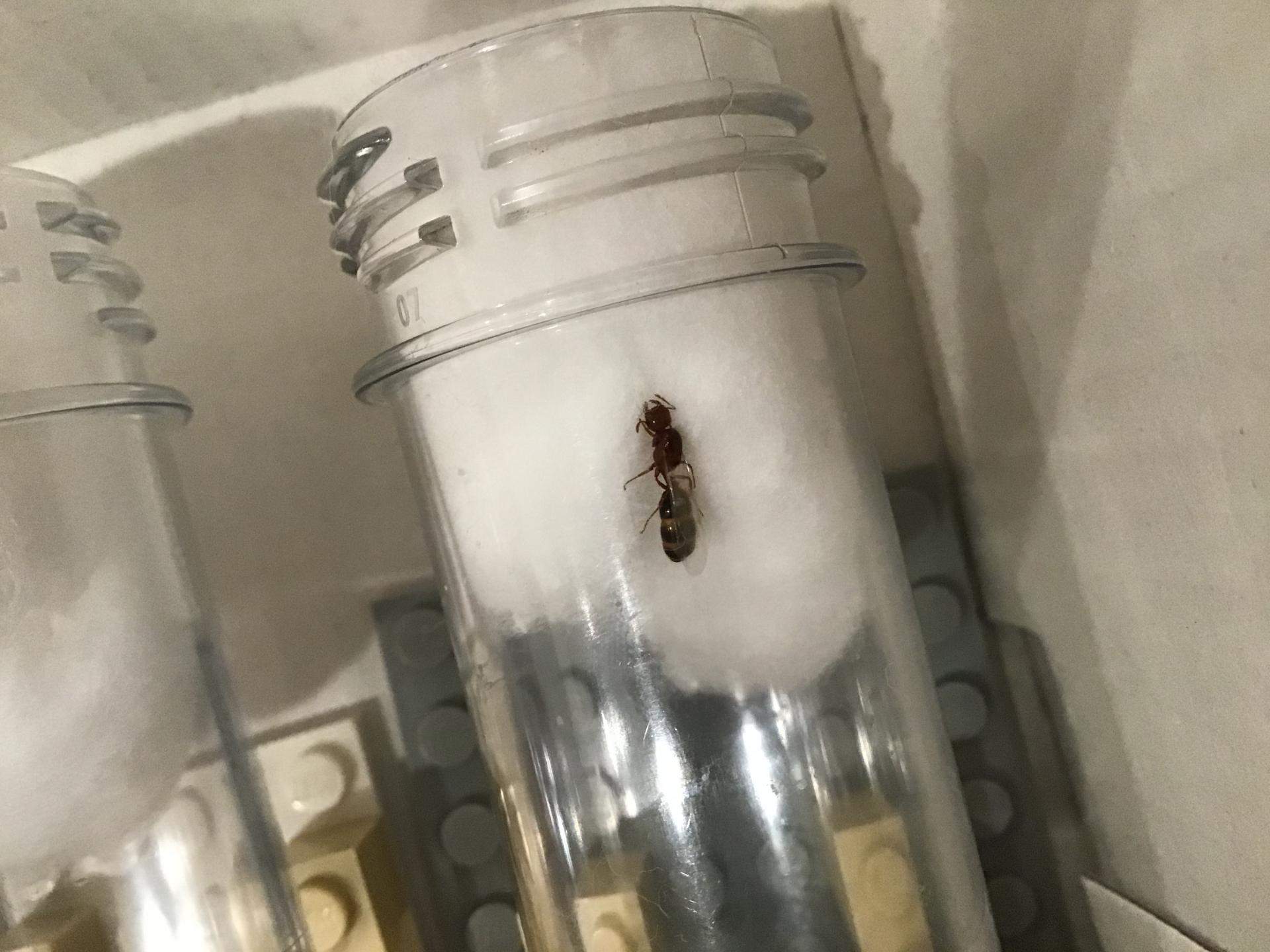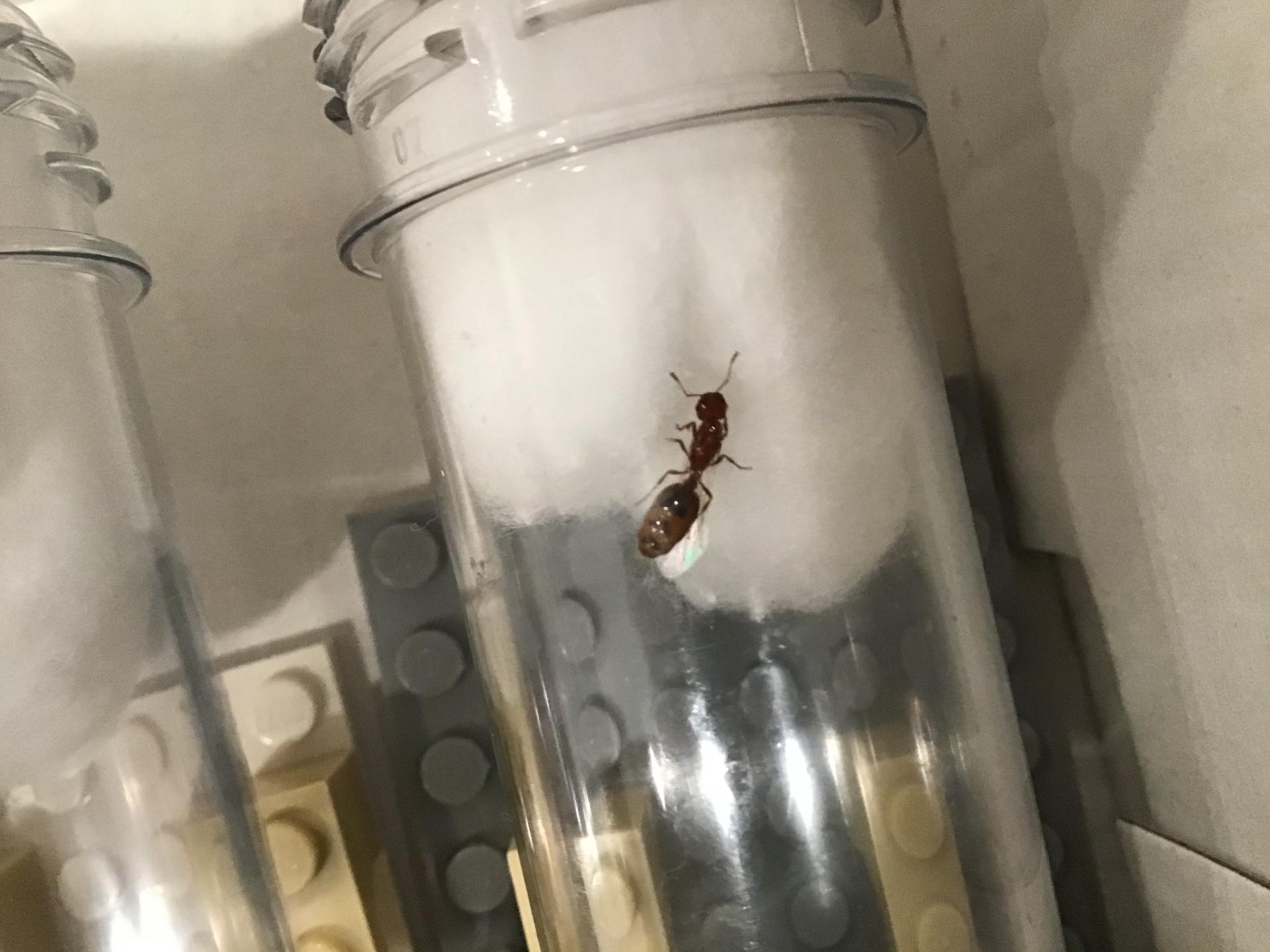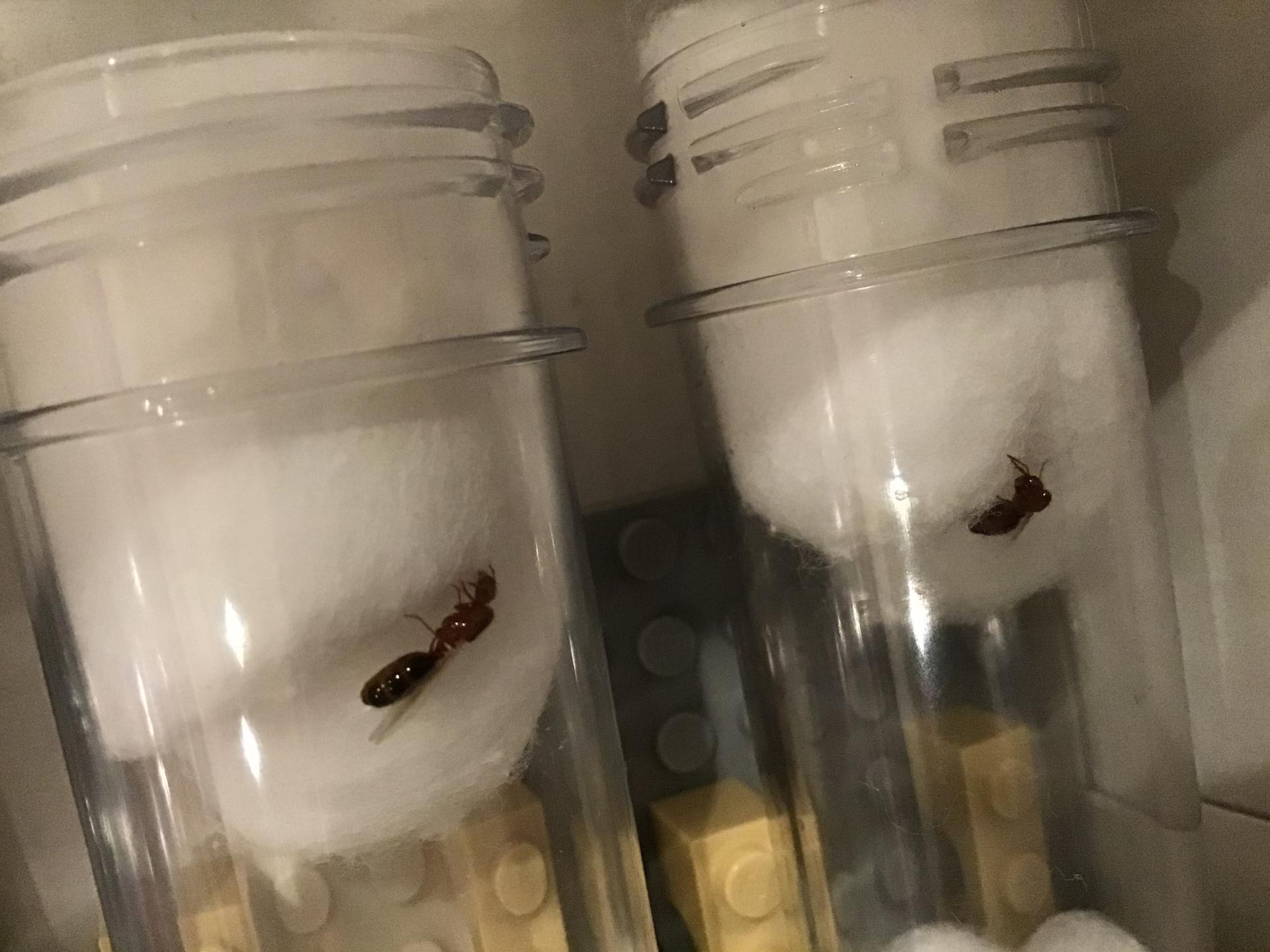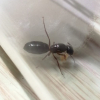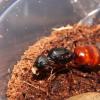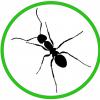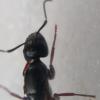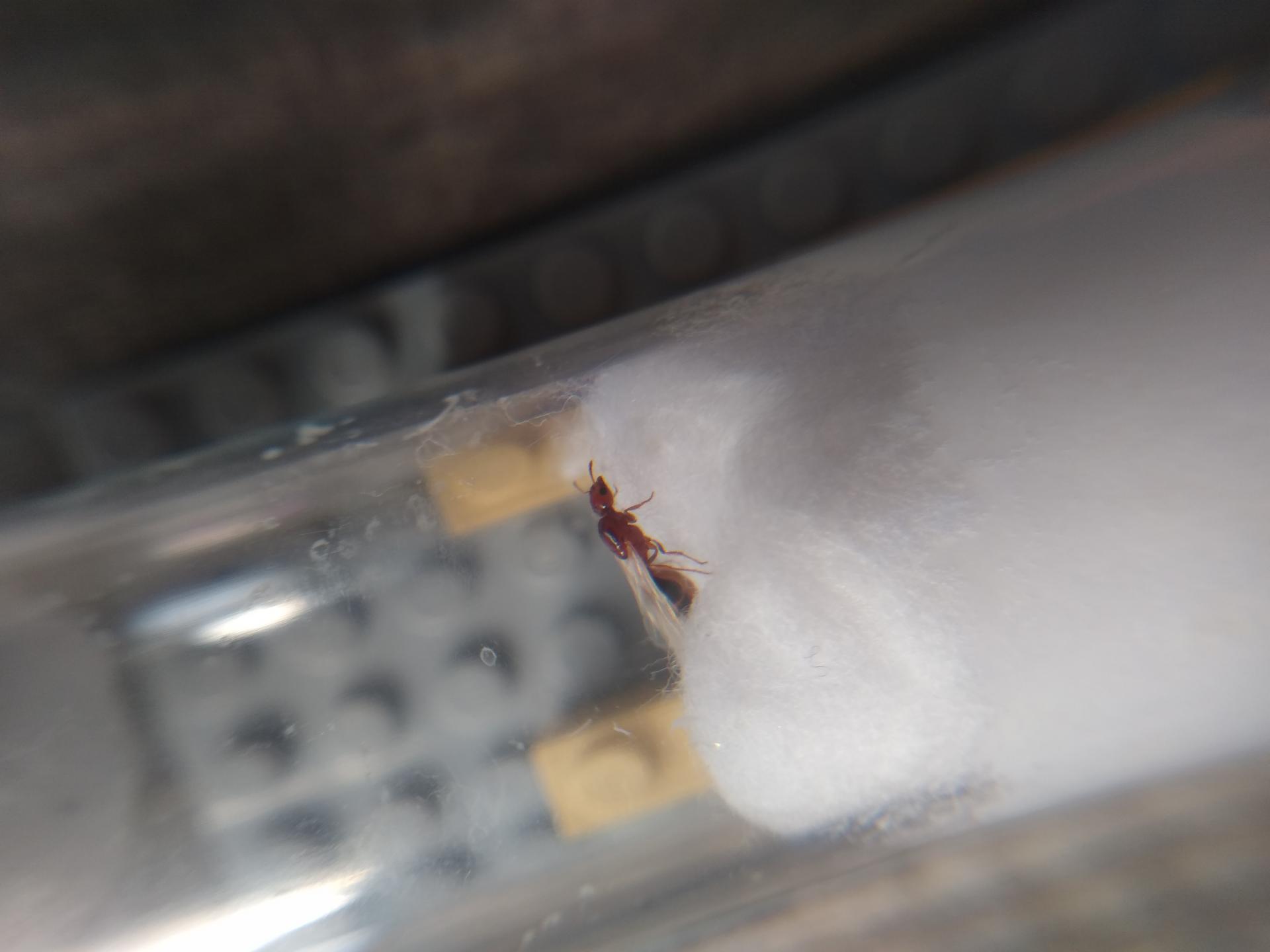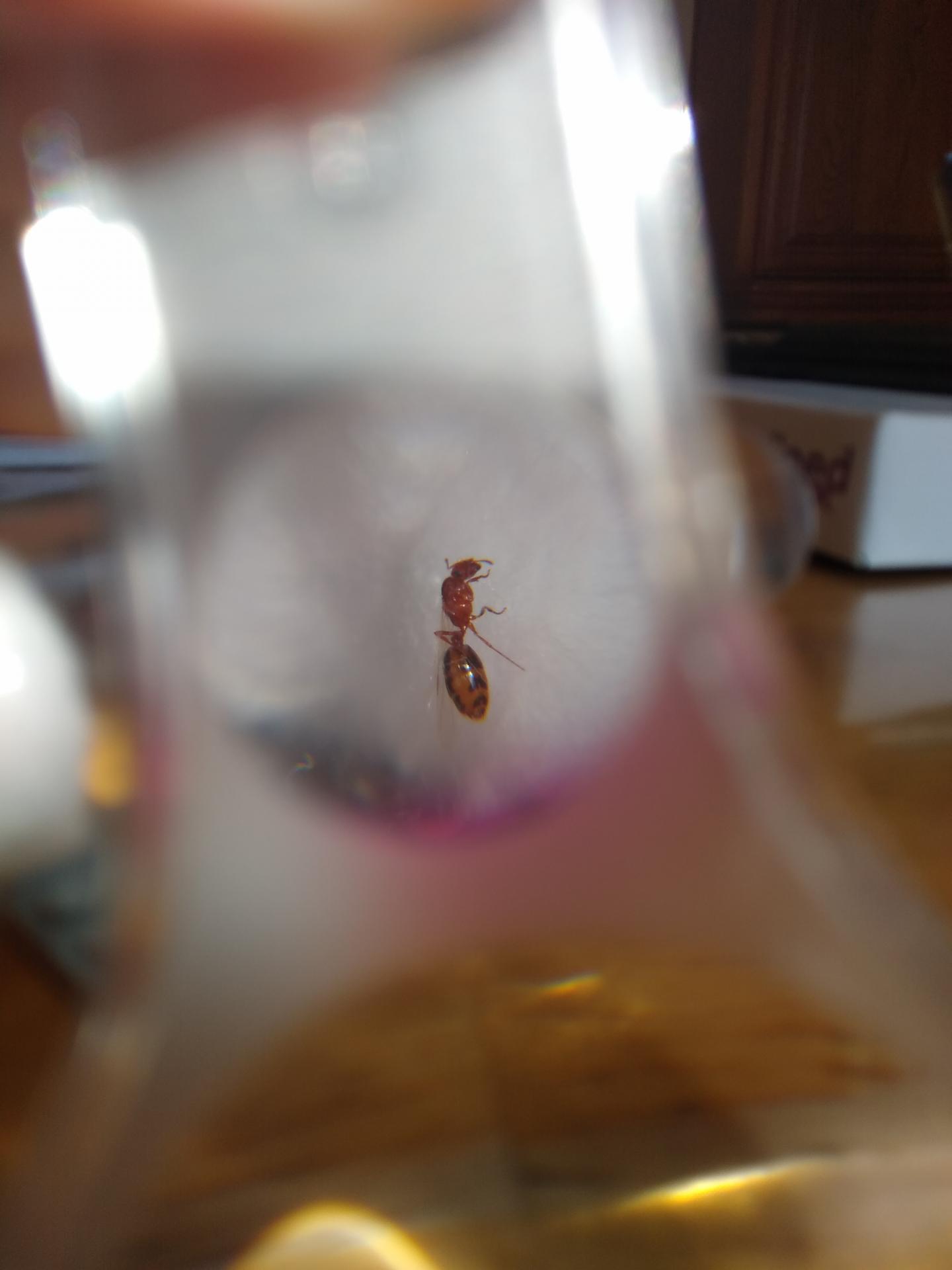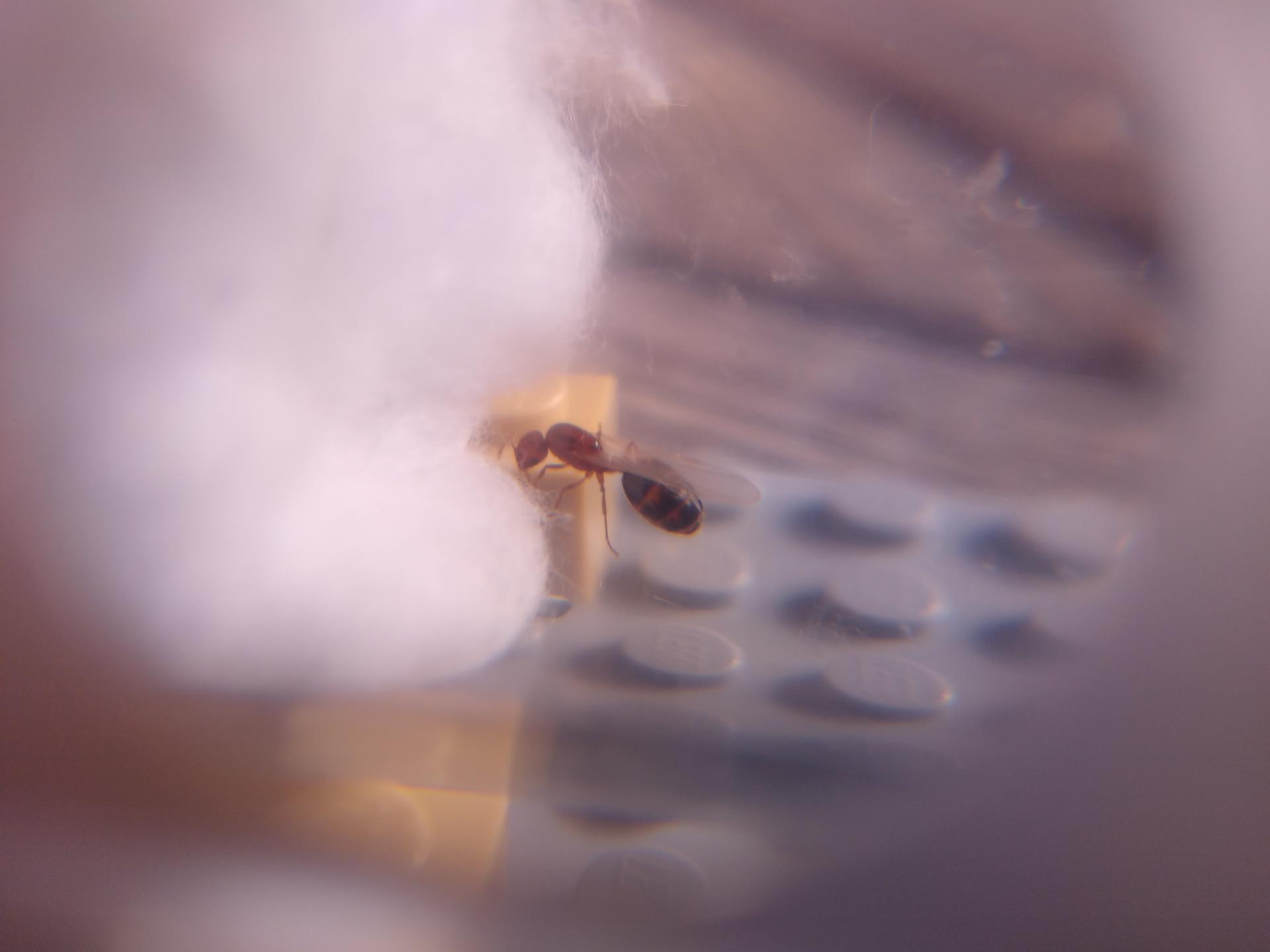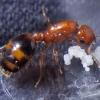- Formiculture.com
- Forums
- Gallery
- Members
- Member Map
- Chat

Queen ID Request: Southern California (OC)
Started By
Bashland
, Jun 21 2021 11:13 PM
20 replies to this topic
#1
 Offline
-
Posted June 21 2021 - 11:13 PM
Offline
-
Posted June 21 2021 - 11:13 PM
1. Location (on a map) of collection: Trabuco Canyon, Orange County, CA
2. Date of collection: June 21, 2021
3. Habitat of collection: oaky forest near tiny creek in canyon
4. Length (from head to gaster): unknown, guess about 10mm
5. Color, hue, pattern and texture: reddish head and thorax, black gaster with lighter stripes, lower half of gaster looks swollen to show lighter color around black segments. I believe they have two petioles.
6. Distinguishing characteristics:
7. Distinguishing behavior: trying to escape test tube
8. Nest description: unknown
9. Nuptial flight time and date: June 21, 2021 between 830p and 9p
Found these queens with a black light. They flew onto a white sheet. I was hoping for camponotus or liometopum, but I am guessing this is solenopsis invicta?
2. Date of collection: June 21, 2021
3. Habitat of collection: oaky forest near tiny creek in canyon
4. Length (from head to gaster): unknown, guess about 10mm
5. Color, hue, pattern and texture: reddish head and thorax, black gaster with lighter stripes, lower half of gaster looks swollen to show lighter color around black segments. I believe they have two petioles.
6. Distinguishing characteristics:
7. Distinguishing behavior: trying to escape test tube
8. Nest description: unknown
9. Nuptial flight time and date: June 21, 2021 between 830p and 9p
Found these queens with a black light. They flew onto a white sheet. I was hoping for camponotus or liometopum, but I am guessing this is solenopsis invicta?
#2
 Offline
-
Posted June 21 2021 - 11:16 PM
Offline
-
Posted June 21 2021 - 11:16 PM
These are the first queen ants I’ve ever caught.
#3
 Offline
-
Posted June 21 2021 - 11:19 PM
Offline
-
Posted June 21 2021 - 11:19 PM
#4
 Offline
-
Posted June 21 2021 - 11:56 PM
Offline
-
Posted June 21 2021 - 11:56 PM
looks like solenopsis xyloni
#5
 Offline
-
Posted June 22 2021 - 4:23 AM
Offline
-
Posted June 22 2021 - 4:23 AM
Looks like Solenopsis invicta. I have never once seen a S. invicta in that Canyon before.
#6
 Offline
-
Posted June 22 2021 - 5:31 AM
Offline
-
Posted June 22 2021 - 5:31 AM
looks more like xyloni to me. The orange is much more pronounced, although its hard to see with these bad pics.Looks like Solenopsis invicta. I have never once seen a S. invicta in that Canyon before.
- KadinB and PetsNotPests like this
My journals:
Polyergus Mexicanus: https://www.formicul...gs/#entry175528
Lasius minutus: https://www.formicul...cs/#entry174811
Lasius latipes: https://www.formicul...gs/#entry206449
General acanthomyops journal: https://www.formicul...yops-with-eggs/
Polyergus Mexicanus: https://www.formicul...gs/#entry175528
Lasius minutus: https://www.formicul...cs/#entry174811
Lasius latipes: https://www.formicul...gs/#entry206449
General acanthomyops journal: https://www.formicul...yops-with-eggs/
#7
 Offline
-
Posted June 22 2021 - 6:43 AM
Offline
-
Posted June 22 2021 - 6:43 AM
looks more like xyloni to me. The orange is much more pronounced, although its hard to see with these bad pics.Looks like Solenopsis invicta. I have never once seen a S. invicta in that Canyon before.
Sorry about the bad pics. Any tips for getting better pics? This was my first time trying to photograph ants.
#8
 Offline
-
Posted June 22 2021 - 6:45 AM
Offline
-
Posted June 22 2021 - 6:45 AM
The pics are fine, you've got S. Xyloni there. And hey, are you using Legos as test tube racks?! Best idea of the year ![]()
- Antkeeper01, KadinB, DaAnt and 1 other like this
Ants are Pets, not Pests.
-Camponotus sansabeanus
-Camponotus US-CA02
-Camponotus vicinus
-Formica podzolica
-Monomorium spp.
-Pogonomyrmex californicus
-Solenopsis spp.
#9
 Offline
-
Posted June 22 2021 - 7:02 AM
Offline
-
Posted June 22 2021 - 7:02 AM
The pics are fine, you've got S. Xyloni there. And hey, are you using Legos as test tube racks?! Best idea of the year
i was about to ask that lol
- PetsNotPests likes this
1X Pogonomyrmex occidentalis 40-50 Workers
1X Solenopsis molesta 10 Workers (mono)
Ants I Want: Crematogaster sp, Camponotus Sp., Ponera Pennsylvanica, Mymercocystus sp.
My Youtube channel: https://www.youtube....kUjx-dPFMyVqOLw
Join Our Fledgling Discord Server https://discord.com/...089056687423489
#10
 Offline
-
Posted June 22 2021 - 7:58 AM
Offline
-
Posted June 22 2021 - 7:58 AM
These pictures are a lot better than a lot of the stuff people try to get IDs with.
- Antkeeper01, KadinB and PetsNotPests like this
#11
 Offline
-
Posted June 22 2021 - 11:02 AM
Offline
-
Posted June 22 2021 - 11:02 AM
i must be seeing the coloring wrong or something. They look almost completely black on my screen. S. xyloni would make MUCH more sense.
- TennesseeAnts likes this
#12
 Offline
-
Posted June 22 2021 - 12:58 PM
Offline
-
Posted June 22 2021 - 12:58 PM
On the second picture you can see a lot of orange on the bottom of that queen which is a good way of telling if they are xyloni or not. Just with a lot of orange. I have seen both invicta queens and xyloni queens in person. Invicta are just dark red and black. Xyloni have red, orange and black on them and the orange color is very visible.
As seen in this picture (xyloni)

Sent from my iPhone using Tapatalk
As seen in this picture (xyloni)

Sent from my iPhone using Tapatalk
#13
 Offline
-
Posted June 22 2021 - 2:27 PM
Offline
-
Posted June 22 2021 - 2:27 PM
I'm not sure. They do look a lot like invicta to me, with the dark coloration. xyloni is quite likely as well though, might just be the lighting.
Edited by NickAnter, June 22 2021 - 2:29 PM.
- TennesseeAnts and KadinB like this
Hi there! I went on a 6 month or so hiatus, in part due, and in part cause of the death of my colonies.
However, I went back to the Sierras, and restarted my collection, which is now as follows:
Aphaenogaster uinta, Camponotus vicinus, Camponotus modoc, Formica cf. aserva, Formica cf. micropthalma, Formica cf. manni, Formica subpolita, Formica cf. subaenescens, Lasius americanus, Manica invidia, Pogonomyrmex salinus, Pogonomyrmex sp. 1, Solenopsis validiuscula, & Solenopsis sp. 3 (new Sierra variant).
#14
 Offline
-
Posted June 22 2021 - 2:53 PM
Offline
-
Posted June 22 2021 - 2:53 PM
Thanks everyone! I will try to get a better picture. Maybe from the side so I'm not covering it in shadow.
#15
 Offline
-
Posted June 22 2021 - 3:30 PM
Offline
-
Posted June 22 2021 - 3:30 PM
More light is the key. I have heard rumors of S. invicta in that area.
#16
 Offline
-
Posted June 22 2021 - 4:46 PM
Offline
-
Posted June 22 2021 - 4:46 PM
#17
 Offline
-
Posted June 22 2021 - 4:54 PM
Offline
-
Posted June 22 2021 - 4:54 PM
Solenopsis xyloni.
- KadinB and Bashland like this
Hi there! I went on a 6 month or so hiatus, in part due, and in part cause of the death of my colonies.
However, I went back to the Sierras, and restarted my collection, which is now as follows:
Aphaenogaster uinta, Camponotus vicinus, Camponotus modoc, Formica cf. aserva, Formica cf. micropthalma, Formica cf. manni, Formica subpolita, Formica cf. subaenescens, Lasius americanus, Manica invidia, Pogonomyrmex salinus, Pogonomyrmex sp. 1, Solenopsis validiuscula, & Solenopsis sp. 3 (new Sierra variant).
#18
 Offline
-
Posted June 22 2021 - 7:17 PM
Offline
-
Posted June 22 2021 - 7:17 PM
Definitely Xyloni, and from what I know, yes the coloration is the main distinguishable feature between xyloni and invicta.
- KadinB and Bashland like this
#19
 Offline
-
Posted June 22 2021 - 8:13 PM
Offline
-
Posted June 22 2021 - 8:13 PM
It's actually a small third "tooth" on the clypeus, present in invicta, but coloration is generally enough.
- gcsnelling and Bashland like this
Hi there! I went on a 6 month or so hiatus, in part due, and in part cause of the death of my colonies.
However, I went back to the Sierras, and restarted my collection, which is now as follows:
Aphaenogaster uinta, Camponotus vicinus, Camponotus modoc, Formica cf. aserva, Formica cf. micropthalma, Formica cf. manni, Formica subpolita, Formica cf. subaenescens, Lasius americanus, Manica invidia, Pogonomyrmex salinus, Pogonomyrmex sp. 1, Solenopsis validiuscula, & Solenopsis sp. 3 (new Sierra variant).
#20
 Offline
-
Posted June 22 2021 - 8:14 PM
Offline
-
Posted June 22 2021 - 8:14 PM
Yeah, clearly S. xyloni now. You will find those more than anything else out there.
- yaboiseth and Bashland like this
1 user(s) are reading this topic
0 members, 1 guests, 0 anonymous users



